
Revisiting The Mousetrap
IN THE SAME YEAR that Queen Elizabeth II ascended the throne, Agatha Christie’s The Mousetrap opened in London. Now in its 59th year and paralleling the reign of the Queen, it is the longest running play in the world. The play started out as a half-hour radio broadcast entitled Three Blind Mice in celebration of the late Queen Mary’s 80th birthday. Later it was expanded and renamed The Mousetrap before opening in the West End’s Ambassadors Theatre on November 25, 1952. It transferred next door to the St. Martin’s Theatre in March 1974, and it might remain there forever.
When two friends assumed that my “highbrow” theater tastes would prevent me from joining them for a Saturday matinee performance, I sat down at my computer and booked a ticket online hoping to find an answer to the play’s longevity.
[caption id="BeyondtheBookshelf_img1" align="aligncenter" width="436"]
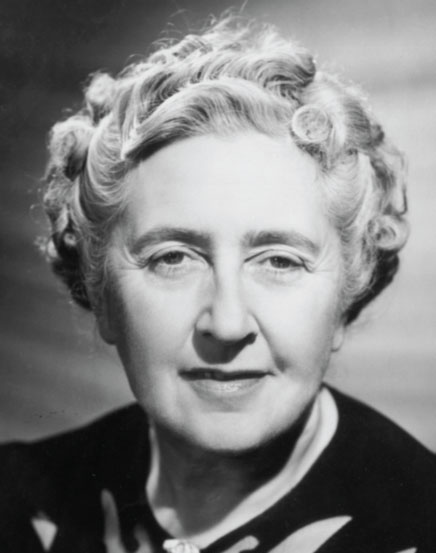
GETTY IMAGES
I first saw The Mousetrap some 30 years ago, and all these years later I assumed that only tourists would be pouring into the theater. Yes, there were tourists from other countries, but I discovered that a fair number were Brits who were seeing the show for the first time. The couple sitting next to me was from Sussex; their tickets were a birthday present. It also surprised me that the theater was practically full in spite of a sign in the lobby stating that The Mousetrap never allows tickets to be discounted.
Before the stage lights come on, the first act begins with a scream and an off-stage murder. A snowstorm is raging outside an isolated guest house owned by a young couple married just one year. They are ready to welcome their first guests, each of whom seems to have a secret. Then a police sergeant arrives on skis to announce that a murderer is among them. Another killing ends the first act.
[caption id="BeyondtheBookshelf_img2" align="aligncenter" width="924"]
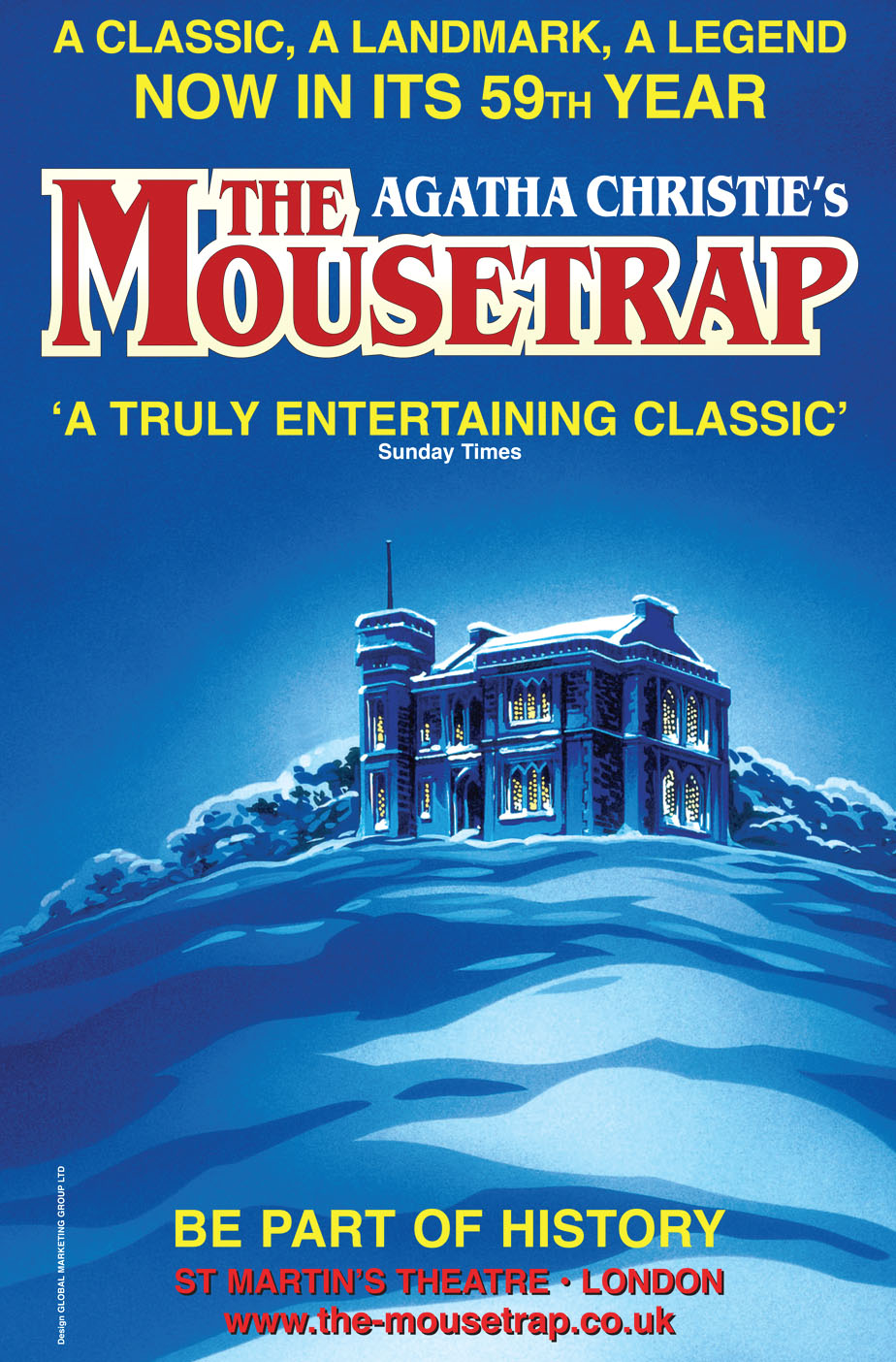
COURTESY OF ST. MARTIN’S THEATRE
THEATRE
The Mousetrap
St. Martin’s Theatre, West Street
For more information
www.the-mousetrap.co.uk
Tickets
www.officiallondontheatre.co.uk
During the course of the play’s two acts, the mystery unfolds, and clues point in every direction, implicating any of the eight on-stage characters as suspects. Alert audience members may be able to unveil several real clues intertwined with many false ones that drift through the story. Interestingly, while the furniture on stage has been replaced over the years, the clock on the mantelpiece has remained the same throughout the entire run of the play.
The Mousetrap’s ending catches many by surprise, perhaps in part because the killer’s identity has remained such a well-kept secret over the years. When it comes to dealing with “spoiler alerts,” the play has it covered: During the curtain call, one of the actors implores the audience to “keep the secret of whodunit locked in your heart.”
While we learn who did it, the still-unanswered question is what keeps this play going year after year. Perhaps it has something to do with Agatha Christie’s popularity as a mystery writer; perhaps it has now joined the list of things to do in London along with visiting the Tower of London and watching the Changing of the Guard outside Buckingham Palace. I did find that The Mousetrap has stood the test of time: It still offers an enjoyable time at the theater. This quintessentially English murder mystery did delight and entertain, and how much more can one expect than that? Like other iconic sights of London, it should be revisited from time to time. So, I am looking forward to catching up with it again in 2040!
—Jennifer Dorn
The King’s Speech
[caption id="BeyondtheBookshelf_img3" align="aligncenter" width="1024"]
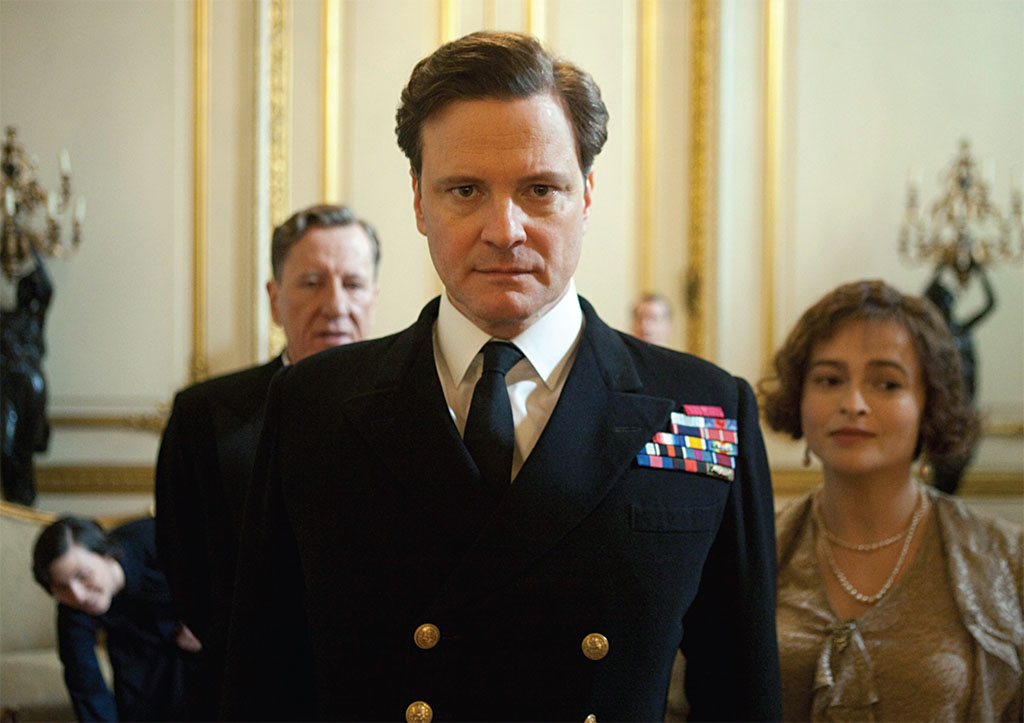
©THE WEINSTEIN COMPANY/COURTESY EVERETT COLLECTION
UNDOUBTEDLY, many British Heritage readers have already seen The King’s Speech. Most of those who have not will want to. Cinema just doesn’t get any better than this. It is widely expected that The King’s Speech will win multiple film honors this spring, and deservedly so.
Colin Firth stars as the Duke of York, “Bertie” to his family, who as the second son of King George V was content to live out of the limelight of royalty. His reluctance to speak in public stemmed from a lifelong speech impediment in the form of a stutter. When the 1936 abdication of his brother, Edward VIII, brought Bertie reluctantly to the throne as George VI, his days of staying in the background were over. The film chronicles the true story of the king’s struggle to master his stutter and his relationship with the eccentric speech therapist, Lionel Logue, with whom the king developed a lifelong friendship. Firth plays the difficult royal role with sensitivity, subtlety and essential humanity.
MOVIES
Helena Bonham Carter plays Bertie’s supportive wife, Queen Elizabeth, whose later popularity is understandable in light of her obvious compassion and commitment to her husband. Geoffrey Rush shines as well as the unorthodox, confident speech therapist, Logue, who believes enough in himself and in the king to succeed where others failed. The principals of the story are surrounded by a superb supporting cast that includes such luminaries as Claire Bloom, Derrick Jacobi, Michael Gambon and Anthony Andrews.
There’s not a lot of swagger or swash and buckle to this story, but it does center around one of the most dramatic moments of Britain’s 20th century and provides a humane and sensitive behind-the-scenes look at life in the Royal Firm. The cinematography is brilliantly understated, the casting inspired (including the young princesses, Elizabeth and Margaret) and the treatment of so many prominent historical figures sympathetic in every detail. There’s no question Colin Firth is the standout, but this is one film that is greater than its very considerable parts. Really. Don’t miss The King’s Speech.
—Dana Huntley
Windsor’s famous dollhouse
BOOKS
The Queen’s Dolls’ House
by Lucinda Lambton, Royal Collection Publications, London, 132 pages, hardcover, £12.95
[caption id="BeyondtheBookshelf_img4" align="alignright" width="349"]

MORE THAN 220 beautiful color photos highlight this delightful small book telling the story of the most famous dolls’ house in the world. Designed by Sir Edward Lutyens for Queen Mary in 1921, the incredibly detailed re-creation of royal life in a stately residence poignantly reflects its times. The book’s introduction describes the dolls’ house as “a last hollering HUZZAH for the vanishing Edwardian age.”
Lutyens supervised every detail of the building’s construction, gathering contributions from many of the most prominent artists and craftsmen in the country. The greatest painters of the day contributed original works of miniature art; the library contains leather-bound original works by A.A. Milne, Joseph Conrad, Thomas Hardy, W.B. Yeats and two score more contemporary writers. In the wine cellar, miniature cases of port, champagne and claret by the dozen hold bottles that each contain a thimbleful of vintage wine. No detail was overlooked creating the dollhouse.
This book may hold a special interest for those who have seen The Queen’s Dolls’ House—long one of the most popular attractions for visitors to Windsor Castle. Anyone, however, with an interest in the Edwardian Age, interior decoration, arts or craftsmanship will enjoy the story and the art in this official story published by the Royal Collections. Even with the help of The Queen’s Dolls’ House, however, it is hard to know whether we should be looking at the dollhouse as a work of art, a folly or a toy.
Back when the law was young
DVDs
Garrow’s Law
2-disc boxed set, Acorn Media, Silver Spring, Md., 4 episodes, app. 240 minutes, $39.99
[caption id="BeyondtheBookshelf_img5" align="alignright" width="226"]
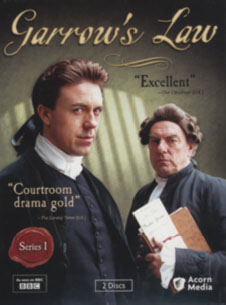
IT IS ALL TOO EASY to take for granted the Anglo-American rule of law that has governed the societies of the English-speaking world for generations. The customs of jurisprudence and trial law that we recognize as cornerstones of personal freedom, however, were incrementally, hardly and sometimes violently won. Garrow’s Law tells the story of part of that struggle.
This is a different kind of courtroom drama. After all, the rules of law and regulations of the courtroom were very different in the late 18th-century. Such modern notions as the ideas of Thomas Paine and equal protection under the law might be all well and good for the upstart colonials, but would struggle at home against centuries of custom, political manipulation, corruption and an assumption of guilt based on social status.
Andrew Buchan stars as William Garrow, an outspoken young barrister who is literally leading a legal revolution in the courtroom of the Old Bailey. Alun Armstrong plays alongside as his mentor and consulting lawyer. Based on a true story and drawing on actual Old Bailey court records, Garrow’s Law won the Royal Television Society award for best history program. No wonder. There are great story lines here, a beautiful depiction of late 18th-century London and a compelling cast. It also evocatively depicts a piece of our collective political history that it is wise we not forget. This series really is BBC period drama at its very best.
DVDs
Poldark: Series Two
4-disc boxed set, Acorn Media, Silver Spring, Md., 13 episodes, app. 683 minutes, $69.99
[caption id="BeyondtheBookshelf_img6" align="alignright" width="267"]
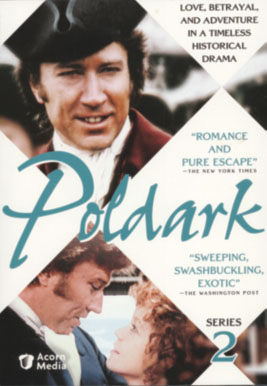
The Cornish Captain rides again!
LAST YEAR (July 2010) British Heritage enthusiastically greeted the release of the first Poldark series by Acorn Media. The ground-breaking, swashbuckling, romantic adventure retains all the verve that made the series one of Britain’s all-time great television dramas. Set in late 18th-century Cornwall, the story features the adventures of Captain Ross Poldark after his return to the family home from war in the Colonies.
The saga has lost none of its action or attraction here in the second half of the story. If you have Series One, then you will certainly want to complete your collection and get back to Georgian Cornwall with the Captain.
Poldark is not an epic in terms of sweeping battles and vast panoramas over swelling strings. Rather it depicts life in rural Cornwall at the end of the 18th-century with all its social realities and relative hardships, while at the same time embodying the universal passions and life values in characters that we come to genuinely care for. That’s pretty epic. At the same time, Poldark will always be a classic.
[caption id="BeyondtheBookshelf_img7" align="aligncenter" width="670"]
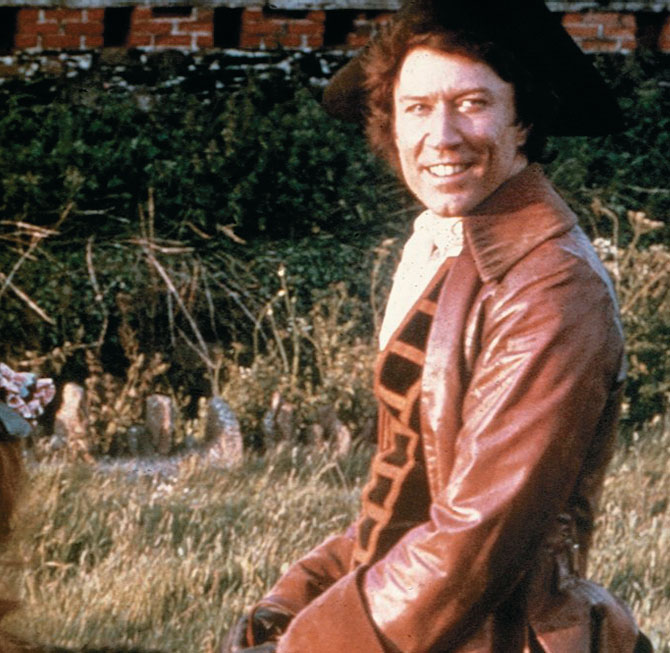
COURTESY OF ACORN MEDIA





Comments